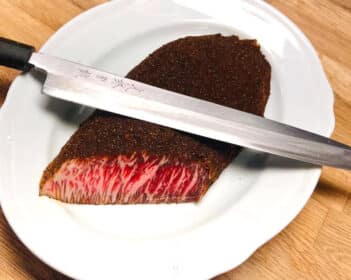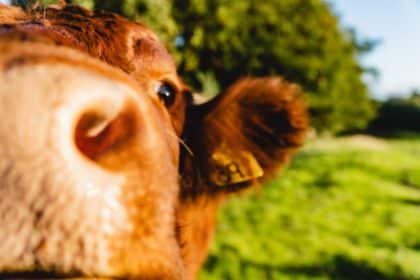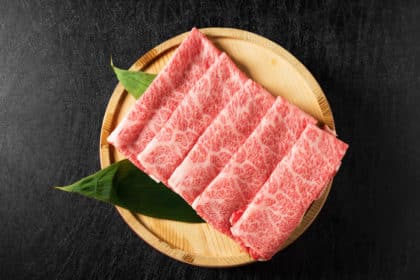Category: General
Alternative Cooking Methods for Wagyu
While grilling and searing Wagyu highlights its buttery texture, other cooking techniques can further enhance its richness and depth of flavor. 1. Braising: Slow-Cooked Perfection Braising involves cooking Wagyu in a flavorful liquid at a low temperature for an extended period, resulting in fork-tender meat that absorbs the essence of the broth. This method is […]
Understanding the Differences Between Wagyu Breeds
Wagyu beef is often celebrated as the pinnacle of luxury in the culinary world, renowned for its buttery texture, intricate marbling, and unforgettable flavor. However, not all Wagyu beef is the same. Wagyu is derived from four distinct breeds of Japanese cattle, each offering a unique combination of flavor, fat content, and texture. Let’s delve […]
The Ultimate Guide to Wagyu Brands
When it comes to luxury meats, Wagyu stands unrivaled. Known for its unparalleled marbling, melt-in-your-mouth texture, and deep umami flavors, Wagyu has captured the hearts of food enthusiasts globally. However, not all Wagyu is created equal. In fact, the categorization of Wagyu brands is highly meticulous, influenced by their environment, feed, marbling requirements, geographical origin, […]
Debunking Wagyu Beef Myths: Separating Fact from Fiction
Wagyu beef is one of the most sought-after culinary delights, famous for its incredible marbling and unmatched flavor. However, there are plenty of myths surrounding Wagyu beef that make it seem even more extravagant than it already is. From cows sipping beer to daily massages, these misconceptions can lead to confusion about what makes Wagyu […]
Race to Raise Super Wagyu: Will DNA Testing Be Key?
Japanese farmers are using genome sequencing to identify super Wagyu mamas to selectively breed genetically superior Wagyu herds. Will this lead to better beef or a uniformity in taste?
Ladies Do It Better, Even Wagyu Ladies
A vast majority of Wagyu meat produced in Japan is either from heifers (young virgin females) or steers (castrated males). Between the two, heifers are more highly prized for their tenderness and silky texture.
Mishima-Ushi: The Purest of All Wagyu
Mishima-ushi has the purest bloodline among all Wagyu.
Designated as a national natural treasure by Japan, only 12-13 Mishima-ushi are released per year for meat consumption.
3 Ways to Cut Ingredient Cost When Serving Wagyu
Serving Japanese Wagyu does not have to be cost-prohibitive. With a bit of ingenuity, many more restaurants can put Japanese Wagyu on their menus. This article discusses 3 easily adoptable tricks.
Japanese Wagyu Has Free Trade to Thank for Its Intense Marbling
The entire Japanese beef cattle industry was at the brink of extinction in the face of foreign competition. This article introduces a little-known historical fact that contributed equally, if not more, to the opulent marbling of Japanese Wagyu – free trade.
Nanjas’ Favorite Wagyu: Iga Gyu
Among the over 150 brands of Japanese Wagyu, only one is said to be the Wagyu enjoyed by ninjas – Iga Gyu. Those who are lucky enough to have sampled Iga Gyu would agree that the ninjas had great taste in beef.









